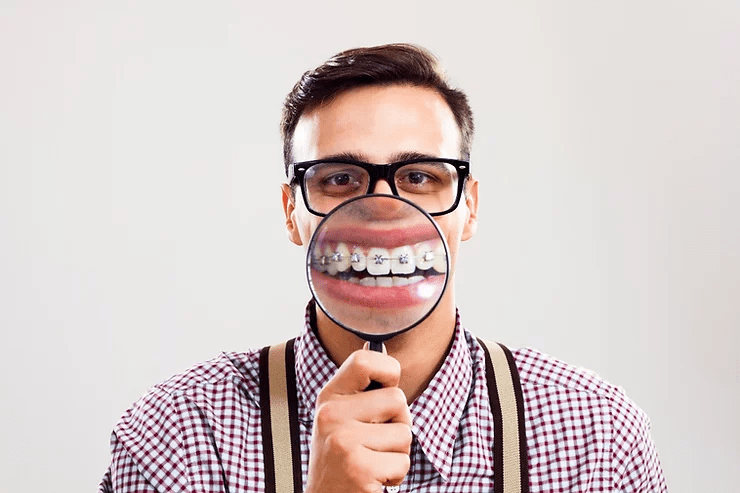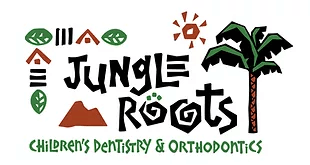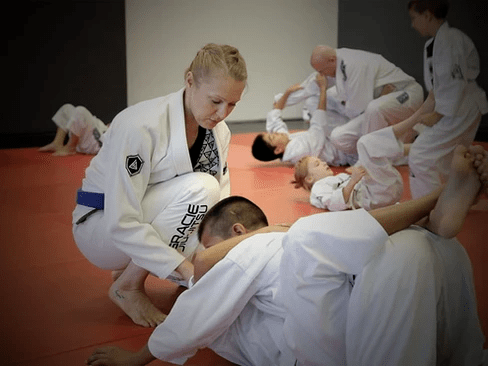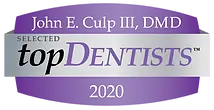Do Adults Need Braces?

The health of your mouth is directly connected to the health of your entire body. We teach the techniques and strategies regarding oral and physical health to our children so that they keep their mouths and bodies in excellent condition and bring them in for regular dental visits. Some children even receive orthodontic treatments so their growing mouths can develop in the most optimal way. We want them to have beautiful and healthy smiles all their lives!
But what about adults? Some of us did not have regular dental care, orthodontic treatments, or even the programs in our schools or instruction from our families regarding our oral health. We may even discover new techniques from our children as they learn to care for their mouths. As we age, the health and appearance of our mouths may begin to matter more. Whatever the motivation to better our oral health, it is never too late to start!
We at Jungle Roots want you to have a happy and healthy mouth! We offer orthodontic services for people of all ages to help you obtain just that. Some of you may have grown up ashamed or self-conscious about your teeth. Maybe your parents couldn't afford to have your teeth aligned when you were growing up, or perhaps you wanted no part of wearing braces at that time. Whatever the reason, if you have any issues with keeping a healthy mouth due to misaligned teeth, it is not too late to be assessed and treated to maintain a good bite.
Reasons for Orthodontic Intervention
The ideal, healthy bite is when you have straight teeth that meet the opposing teeth in your opposite jaw. You can then bite, chew, and converse without obstruction. Reasons for needing correction to your bite can be crowding, spacing that is too far apart, overbites, underbites, teeth meeting abnormally, or not meeting at all. These may be long-standing problems, issues that have changed your tooth configuration as you've matured, or traumatic loss or movement of your teeth (1).
Some issues with your mouth and jaw alignment can affect more than just your smile. Let's investigate the benefits of orthodontic treatment for two common problems that may improve with orthodontic treatment:
- TMJ/TMD (Temporomandibular Joint Disorders) – This joint is where your jawbone meets your temporal skull bone on each side of your face. This system of muscles, ligaments, discs, nerves, and bones allows your mouth to open and close and makes it possible for your lower jaw to move forward, backward, and from side to side. When it is impaired, it can be very painful. The TMJ can be affected by many causes, such as injury, dislocation, arthritis, or an erosion of the disc of the joint, which can contribute to the disorder. Clenching your jaw, grinding your teeth, gum-chewing, and even genetics can also be a factor in developing TMD. When an orthodontist evaluates this disorder, they may recommend exercises to strengthen and stretch the jaw, but some may need treatments such as braces. Orthodontic treatment can help restructure the jaw and take the pressure off the joint. Removable appliances such as splints or night guards may be prescribed and fitted to minimize any grinding or clenching during the night.
- Obstructive Sleep Apnea (OSA) - This disorder can cause many medical problems over time and should be treated as soon as it is diagnosed. Because the airway is obstructed, the person with it stops breathing during sleep for intervals of time. The lack of oxygen to the brain when breathing stops triggers you to wake up. This sleep disruption can lead to obesity, chronic tiredness, and learning impairments. Symptoms include snoring, nasal congestion, dry mouth, and headache. Mood can also be affected, making the sufferer irritable or distracted, and can cause depressive issues and the inability to concentrate. Untreated OSA can cause high blood pressure, heart disease, and stroke. Orthodontic treatment can treat some common causes of OSA, such as a narrow palate, narrow upper dental arch, and other craniofacial structure conditions. Orthodontic treatment can fix these problems by expanding the upper or lower jaw, which repositions the tongue, soft palate, and uvula, opening up the airways.
According to the American Association of Orthodontists (ADA), one in every four patients receiving orthodontic treatment is an adult. Adults have recognized that leaving misaligned teeth untreated can lead to other, more severe dental problems. Treating the issues can improve the quality of life for those struggling with their bite and fighting their ill-fitting teeth. Crooked teeth can be corrected at any age. Straightening the teeth can make keeping them clean easier, deterring tooth decay and gum disease (2).
Treatment
The treatment process for an adult is essentially the same as for a child, regardless of the adult's age. Orthodontic problems can be treated as effectively for an adult as they can for a child or teen, as the teeth are moving in response to force on them placed over a period of time. Before treatment, the orthodontist will take a health history, conduct a clinical exam with x-rays of your mouth and head, and may take photos of your face and teeth. We will work with you to develop a treatment plan from the information gathered with these items (2).
The most significant difference in orthodontic treatment for adults versus children or teens is that the bones of the face in an adult are no longer growing. Due to the density of the bone in the jaw and its maturity, it may take longer for the adult teeth to correct themselves with braces. An adult may have other things going on that affect the course and outcome of the treatment, such as:
- Medications
- Smoking habits
- Grinding or clenching teeth
We may need to collaborate with your dentist to ensure we are working through all needs of the patient. This collaboration helps obtain optimal dental health.
How It Works:
Movement of your teeth is accomplished by placing controlled, gentle forces with braces and/or other appliances, to help guide them where they need to be for the optimal smile and function. The teeth move because of these forces. The bones are breaking down and rebuilding bone tissue in the correct place.
Let's examine a few of the tools we use in adult orthodontic treatments:
- Braces – these are the most common and are made up of wires and brackets. The brackets are fixed to your teeth, and the wires are strung between the brackets. The wires are tightened or loosened to control where the teeth need to be moved. Tiny rubber bands may be added to the wires to hold them in place.
- Aligners – sometimes called invisible braces, each set of plastic-like, transparent aligners are worn for one to three weeks and can be taken out for two hours of the day for eating and brushing your teeth. When the weeks are over, you move to another set engineered to move your teeth once more in an incremental amount. This process continues until you have reached the desired alignment.
- Temporary Anchorage Devices (TADs) - tiny implants that provide a fixed point for which to apply forces and predictably move teeth. The orthodontist can place these in many sites in the mouth and remove them when no longer needed.
- Power Chains – these are used with standard braces, are more substantial than elastic o-rings, and can provide extra force when needed.
The orthodontist at Jungle Roots will recommend one or more of these or other appliances that are deemed best to correct your orthodontic problem efficiently.
The Process
We will first see you for a consultation, to conduct an assessment and discuss the options for your treatment. We will explain the process to you so that you can make the experience go faster and more smoothly.
Some tips for making the treatment go as quickly as possible (2):
- When brushing and flossing, follow the instructions of your orthodontist exactly.
- Continue to see your dentist for a professional cleaning every six months, or more often if indicated by the orthodontist.
- Keep your scheduled orthodontic appointments. This practice can help deter unpredicted complications or incidents.
- Drink water. Avoid regular or diet soda, fruit juices, and sports drinks. These have added sugar and can be acidic, which can be detrimental to your treatment.
- No hard, sticky, or crunchy foods should be eaten. These can damage your braces. Eat foods that are soft and easy to chew and swallow.
- Wear your elastics or rubber bands as discussed and instructed by your orthodontist.
- Notify us if there is any damage to your braces or if they break in any way. Progress can be undone in a very short amount of time - which may cause your treatment to take longer than planned.
The length of time that you wear your appliance can vary from person to person. It will depend on how closely you follow the instructions of your orthodontist. Other factors that may influence your treatment are:
- How far do the teeth need to be moved?
- How much room do the teeth need in the mouth to move?
- How severe is the problem?
- How complex is your orthodontic issue?
When your treatment is complete, you may need to wear a retainer to keep your teeth and jaw bones in the correct place. This can be done by taking a mold of your mouth, just as before your braces were applied. You will need to wear it for the amount of time instructed by the orthodontist (3).
Now What?
Once you decide to start the process of correcting your misaligned teeth or other orthodontic problems, our staff at Jungle Roots is here to support you through the entire course of treatment. Talk with our orthodontists about your concerns, and we are happy to discuss any questions you have. We can make the experience go smoothly for you and transition you through the process quickly, smoothly, and efficiently. We do our best to ensure that you will be pleased with the services we provide at Jungle Roots for all of your family's orthodontic needs.

At Jungle Roots Children’s Dentistry & Orthodontics, we strive to provide the highest comprehensive pediatric and orthodontic dental care in a unique, fun-filled environment staffed by a team of caring, energetic professionals. We believe the establishment of a “dental home” at an early age is the key to a lifetime of positive visits to the dentist.
Call Us - (480) 759-1119
Sources:
- Orthodontics. Mouth Healthy. American Dental Association. Copyright 2022. Accessed July 1, 2022. https://www.mouthhealthy.org/en/az-topics/o/orthodontics
- Adult's guide to orthodontics. American Association of Orthodontists. Copyright 2019. Accessed July 1, 2019. https://www3.aaoinfo.org/_/adult-orthodontics/
- Braces & Retainers. Cleveland Clinic. Reviewed August 13, 2020. Accessed July 1, 2022. https://my.clevelandclinic.org/health/drugs/10899-braces--retainers


















